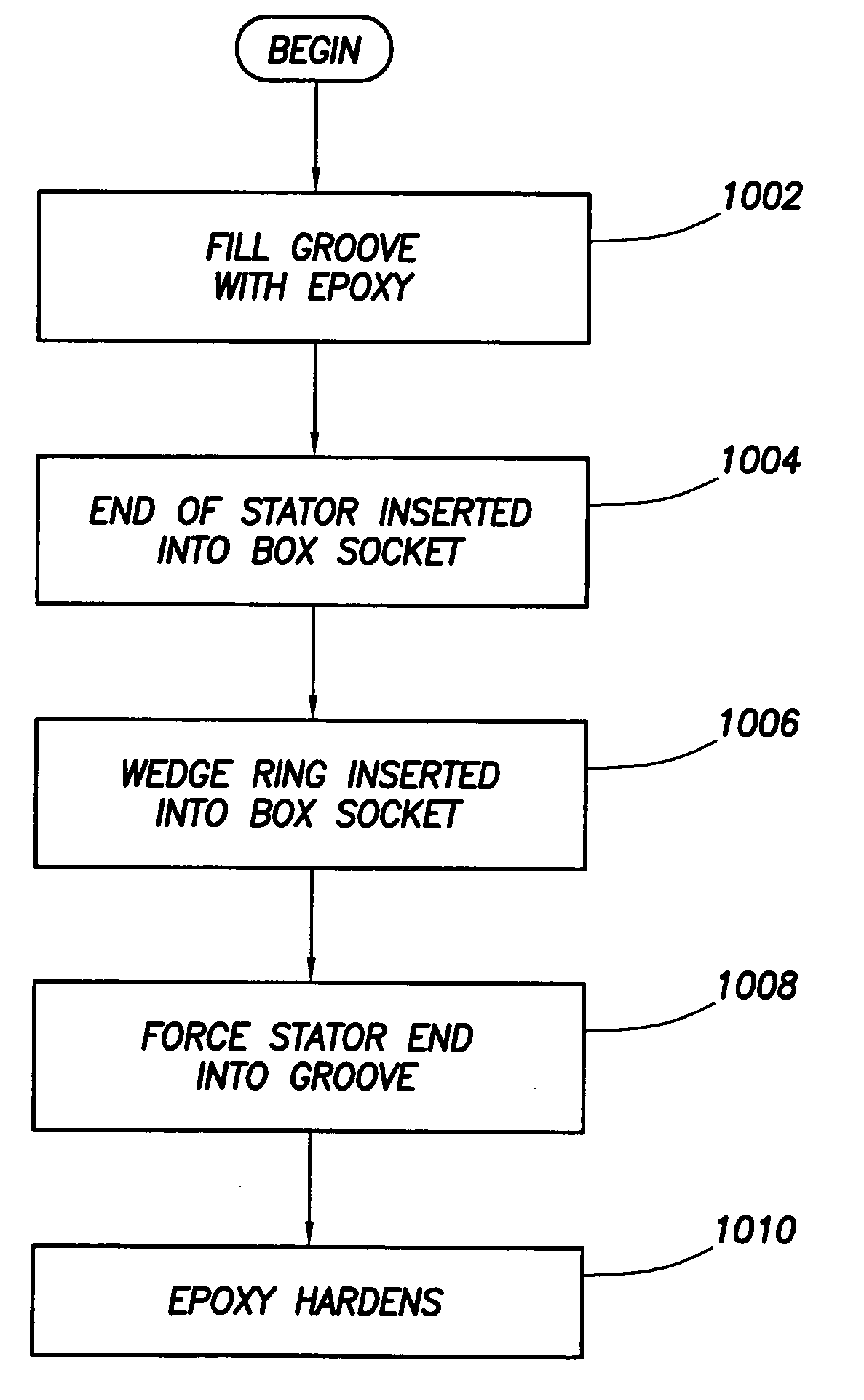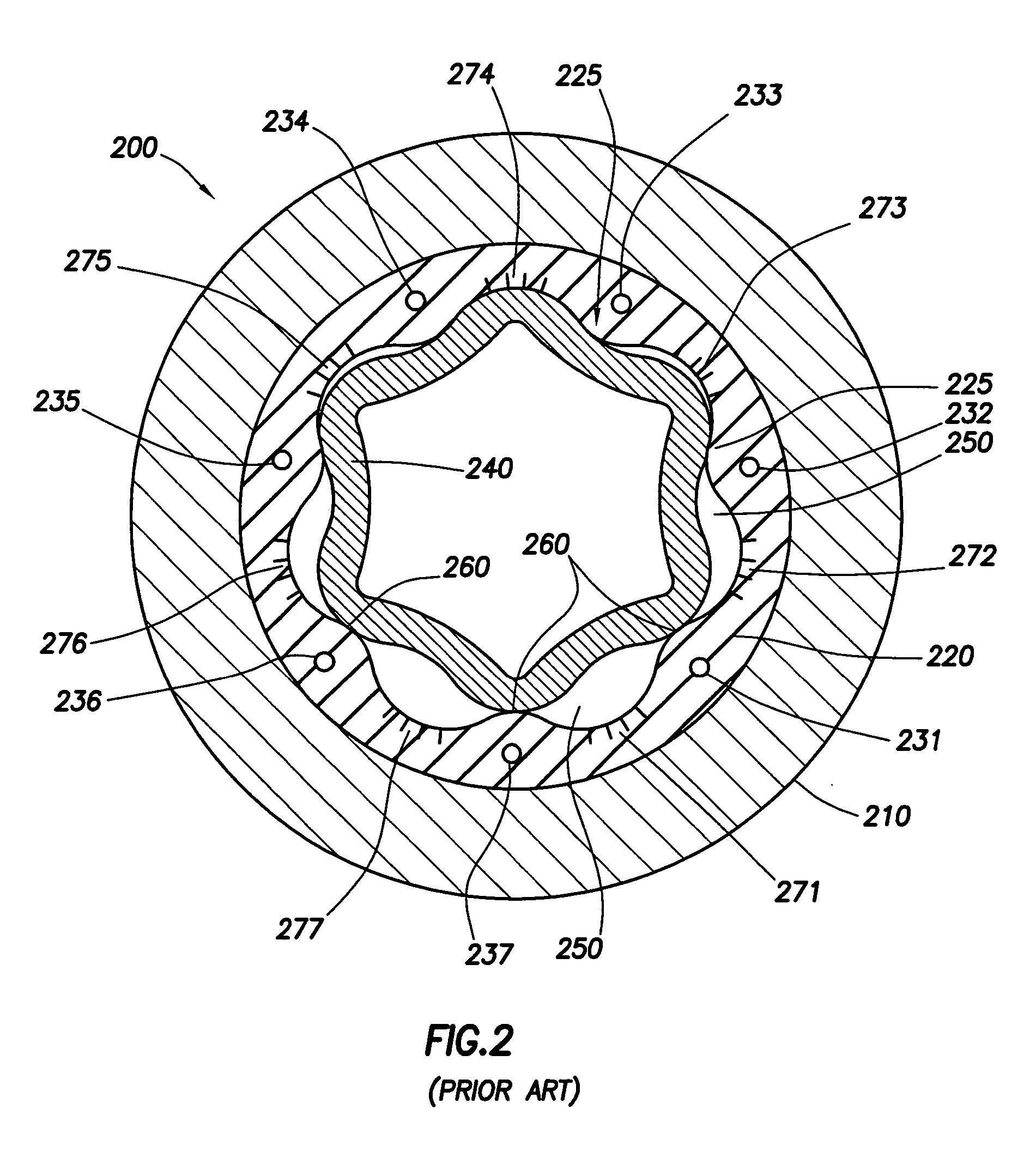Composite motor stator
a stator and composite technology, applied in the direction of machines/engines, liquid fuel engines, rotary piston liquid engines, etc., can solve the problems of stress and heat generated by the movement of the rotor within the stator, rapid degradation of the elastomer, mechanical properties
- Summary
- Abstract
- Description
- Claims
- Application Information
AI Technical Summary
Problems solved by technology
Method used
Image
Examples
Embodiment Construction
[0027] A Moineau motor stator according to the invention is formed from a composite material and includes lobes formed along the inner diameter of the stator. An elastomeric lining of constant thickness may be applied to the inner diameter of the composite stator. A metal-to-composite box connection is applied to one or both ends of the stator to provide an interface to steel pipelines uphole of the motor and other components. A novel method allowing the economic manufacture of such a composite stator is also disclosed.
[0028]FIG. 3 is a cut-away top-view of a Moineau-style motor 300 manufactured in accordance with an embodiment of the invention. A composite stator 320 has an inner profile 350 and an outer profile 355. Attached to stator 320 is an elastomeric layer 330. As shown, a rotor 310 inserted in the stator 320 has multiple helical lobes. Rotor 310 may be solid or hollow, and may be made from any suitable material including steel. The rotor and elastomeric layer 330 engage at...
PUM
| Property | Measurement | Unit |
|---|---|---|
| Fraction | aaaaa | aaaaa |
| Length | aaaaa | aaaaa |
| Thickness | aaaaa | aaaaa |
Abstract
Description
Claims
Application Information
 Login to View More
Login to View More - R&D
- Intellectual Property
- Life Sciences
- Materials
- Tech Scout
- Unparalleled Data Quality
- Higher Quality Content
- 60% Fewer Hallucinations
Browse by: Latest US Patents, China's latest patents, Technical Efficacy Thesaurus, Application Domain, Technology Topic, Popular Technical Reports.
© 2025 PatSnap. All rights reserved.Legal|Privacy policy|Modern Slavery Act Transparency Statement|Sitemap|About US| Contact US: help@patsnap.com



